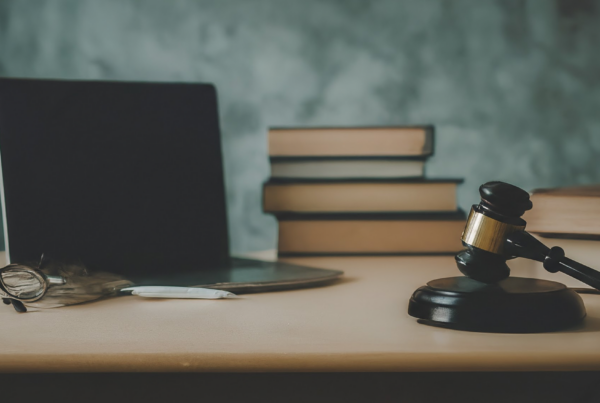In the ever-evolving world of hospitality and entertainment, businesses strive to create engaging atmospheres that captivate their audiences. Offering commercial video programming is a powerful tool in achieving this, yet navigating the legal landscape can be daunting. Understanding Legal Insights on Commercial Video Programming is not just beneficial—it’s essential for compliance and success.
For businesses like casinos, restaurants, and bars, providing top-notch entertainment isn’t just a perk; it’s a crucial part of their strategy to enhance customer experience. However, the intricacies of licensing agreements and copyright laws can create significant challenges. Ensuring compliance requires a thorough understanding of these legal aspects to avoid costly pitfalls.
DLM Media, a leader in commercial video solutions, is dedicated to delivering a worry-free experience with reliable signal delivery. Our expertise in the field allows us to guide businesses through these complexities, ensuring seamless operations while maximizing the impact of their entertainment offerings.
This blog post will delve into the key legal considerations every business should be aware of. From selecting the right programming provider to effectively navigating the licensing landscape, we aim to equip you with the knowledge needed to thrive in a competitive market. Join us as we explore these essentials and help your business operate within the bounds of the law.
Stay tuned as we move forward to uncover the nuances of licensing and their impact on your choice of entertainment solutions.
Understanding Licensing Agreements in Commercial Video Programming
Licensing agreements are a cornerstone of legal compliance in the realm of commercial video programming. These agreements grant businesses the right to publicly display copyrighted content, such as movies, TV shows, and music videos. Understanding the nuances of these agreements is crucial for businesses in the hospitality and entertainment sectors, where non-compliance can lead to significant legal and financial repercussions.
For businesses like casinos, restaurants, and bars, securing the appropriate licenses is not just a legal obligation but a strategic necessity. Public performance licenses from organizations such as ASCAP, BMI, and SESAC are essential to legally broadcast content in public spaces. Without these, businesses risk facing hefty fines and potential lawsuits, which can tarnish their reputation and financial standing.
Types of Licensing Agreements
There are various types of licensing agreements that businesses need to consider when engaging in commercial video programming. The most common are public performance licenses, which allow the public display of copyrighted material. These licenses are typically obtained from performing rights organizations (PROs) like ASCAP, BMI, and SESAC, which manage the rights to play music and other copyrighted material.
Another critical type is the synchronization license, which is required when video content is paired with music. This license is particularly relevant for businesses that create custom video content for their venues. Additionally, businesses must be aware of blanket licenses that cover a wide range of content, offering a more comprehensive solution for establishments with diverse programming needs.
Implications of Non-Compliance
Failing to adhere to licensing requirements can have severe implications. Non-compliance can result in legal action, including lawsuits and substantial fines. For instance, a well-known restaurant chain faced a lawsuit for unauthorized public performances of copyrighted music, resulting in significant financial penalties and damage to its brand reputation.
Moreover, the cost of non-compliance extends beyond financial penalties. Businesses may also suffer from reputational damage, which can lead to a loss of customer trust and loyalty. It’s crucial for businesses to regularly review and update their licensing agreements to ensure they remain compliant with current laws and regulations.
Case Studies: Learning from Others
Examining real-world examples can provide valuable insights into the importance of compliance. Consider the case of a popular bar that neglected to update its licensing agreements as new content was added to its programming lineup. This oversight resulted in unauthorized use of copyrighted material, leading to legal action and financial loss.
On the other hand, a proactive approach can safeguard businesses from such pitfalls. A renowned casino chain implemented a comprehensive compliance strategy, ensuring all content was properly licensed. This not only protected the business from legal action but also enhanced its brand image as a trustworthy and responsible entity.
For businesses seeking to navigate the complexities of licensing agreements, consulting with legal experts and regularly reviewing agreements is essential. By doing so, they can avoid costly legal issues and focus on delivering exceptional entertainment experiences to their customers.
Navigating Copyright Issues in Video Programming
In the realm of commercial video programming, understanding copyright issues is crucial for businesses in the hospitality and entertainment sectors. Copyright laws protect the intellectual property rights of creators, and businesses must navigate these laws to avoid legal pitfalls. Respecting these rights not only ensures compliance but also fosters a culture of integrity and respect for creative works.
One of the primary challenges businesses face is distinguishing between copyrighted and public domain content. While copyrighted content requires permission or licensing for use, public domain content is free to use without restrictions. Understanding these differences is essential for businesses to make informed decisions about the content they display.
Understanding Copyrighted vs. Public Domain Content
Copyrighted content is protected by law, granting the creator exclusive rights to its use and distribution. This includes movies, TV shows, music, and more. Businesses must obtain the necessary licenses to use such content legally. Failure to do so can result in legal action and financial penalties.
In contrast, public domain content is not protected by copyright laws, either because the copyright has expired or the creator has waived their rights. This content can be used freely, providing businesses with a cost-effective alternative for their programming needs.
| Aspect | Copyrighted Content | Public Domain Content |
|---|---|---|
| Legal Protection | Protected by copyright laws | No copyright protection |
| Usage Rights | Requires permission or licensing | Free to use without restrictions |
| Examples | Movies, TV shows, music | Classic literature, government works |
Legal Implications of Copyright Infringement
Copyright infringement occurs when copyrighted material is used without permission. This can lead to severe legal consequences, including lawsuits and substantial fines. For example, a bar that plays copyrighted music without a license could face legal action from rights holders, resulting in significant financial losses and reputational damage.
To avoid these issues, businesses should work with legal experts to ensure all content is properly licensed. Regular audits of programming content can help identify potential infringement risks and ensure compliance with copyright laws.
Strategies to Avoid Copyright Issues
Businesses can implement several strategies to navigate copyright issues effectively. First, securing comprehensive licenses for all content is essential. Working with performing rights organizations (PROs) such as ASCAP, BMI, and SESAC can help businesses obtain the necessary permissions for public performances.
Additionally, businesses should establish a compliance training program for employees. Educating staff about copyright laws and the importance of respecting intellectual property rights can minimize the risk of infringement. By fostering a culture of compliance, businesses can protect themselves from legal challenges and focus on delivering engaging entertainment experiences.
For more insights on navigating copyright issues in video programming, explore additional resources on DLM Media’s website.
Best Practices for Legal Compliance in Video Programming
Adhering to legal standards in video programming is not only crucial for avoiding legal pitfalls but also enhances a business’s reputation and builds trust with customers. By implementing best practices, businesses can ensure they remain compliant while delivering engaging video content. This section outlines key strategies to help businesses navigate the complexities of legal compliance effectively.
Understanding and implementing these best practices will not only protect your business from potential legal issues but also enhance your reputation as a responsible and reliable provider of entertainment. Let’s explore the key steps to achieve legal compliance in video programming.
Conduct Regular Legal Audits
One of the most effective ways to ensure compliance is by conducting regular legal audits. These audits help identify any areas where your business might be at risk of non-compliance. By reviewing your current video programming practices, you can pinpoint potential legal pitfalls and address them proactively.
Engage with legal experts who specialize in copyright and licensing laws to conduct these audits. Their expertise will ensure that your business adheres to all relevant regulations and avoids costly legal disputes. Regular audits also provide an opportunity to update your practices in line with any changes in the legal landscape.
Secure Appropriate Licenses
Obtaining the right licenses is crucial for legal compliance in video programming. Businesses must secure public performance licenses from organizations such as ASCAP, BMI, and SESAC, which cover the rights to play music and other copyrighted content in public spaces.
Ensure that your licenses are comprehensive and cover all the content you intend to display. Regularly review and update these licenses to accommodate any new programming additions. This proactive approach will help prevent unauthorized use of copyrighted material and protect your business from legal repercussions.
Implement a Compliance Training Program
Training your staff on legal compliance is another critical step in minimizing risks. A well-structured compliance training program will educate employees about the importance of adhering to copyright and licensing laws, as well as the potential consequences of non-compliance.
Incorporate real-world examples and case studies into your training sessions to illustrate the impact of compliance violations. Encourage open communication and provide resources for employees to stay informed about legal requirements. By fostering a culture of compliance, your business can significantly reduce the likelihood of legal issues arising from video programming.
By following these best practices, businesses can navigate the complexities of legal compliance in video programming effectively. For more insights and resources, visit DLM Media’s website and explore our comprehensive guides on commercial video programming.
Maximizing Success Through Legal Compliance
In the competitive world of hospitality and entertainment, achieving success goes beyond offering captivating content. It’s about ensuring that your commercial video programming is legally compliant. By understanding and implementing Legal Insights on Commercial Video Programming, businesses can turn compliance into a strategic asset.
Legal compliance is more than just a necessity; it’s a means to enhance your business’s reputation and build lasting customer relationships. By adhering to licensing agreements and copyright laws, businesses not only avoid costly legal pitfalls but also position themselves as trustworthy and reliable entities. This trust can lead to increased customer loyalty and open doors to new partnerships.
- Conduct regular audits to identify and address any compliance gaps.
- Secure comprehensive licenses for all video content to ensure legal use.
- Implement staff training programs on legal compliance to minimize risks.
- Leverage compliance as a marketing tool to build trust and differentiate your brand.
We invite you to review your current compliance strategies and explore additional resources on DLM Media’s website. By doing so, you’ll not only protect your business from legal issues but also enhance your brand’s credibility and customer trust. How will you turn legal compliance into a strategic advantage for your business?





